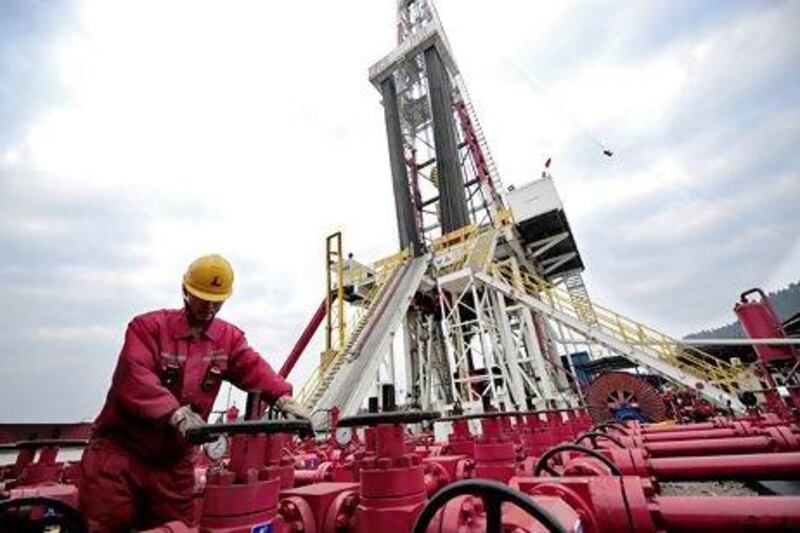China's ambitious goal of replicating North America's shale revolution will change the dynamics of the global liquefied natural gas (LNG) market to the benefit of gas importers in the Arabian Gulf.
Last week China took a big step towards opening up its vast gas reserves with a deal struck between the Anglo-Dutch oil major Shell and the government-controlled China National Petroleum Company (CNPC).
"It's early days, but Chinese shale could be an enormous story," said Robin Mills, the head of consulting at Manaar Energy. "It strikes me as a place that would do shale well."
Shell has committed to investing US$1 billion (Dh3.67bn) a year into developing a shale gas block in the Sichuan basin.
China plans to increase the share of natural gas in its energy mix, and draw on its own resources to meet demand.
While 19 shale blocks have already been allocated for production, these have gone to Chinese companies lacking the technology and expertise to tap the fields.
Foreign players will be crucial to develop China's shale, adding to the significance of the Shell-CNPC joint venture.
Annual consumption of gas will grow by 20 billion cubic metres every year to reach 230 billion cubic metres by 2015, according to the national energy administration. The government intends to help to meet demand with a surge in shale gas production, and has set a target of extracting 6.5 billion cubic metres of gas by 2015, and up to 100 billion cubic metres by 2020.
Shale gas is found in underground rock formations, which are tapped by applying hydraulic fracturing, or fracking, a technique that unlocks gas with horizontal drilling and the injection of water and chemicals. Fracking has proved a game-changer in North America, where gas prices have tumbled as production soars.
The energy information administration in the United States estimates that China has 36 trillion cubic metres of recoverable shale reserves, more than the US and Canada combined.
If China is able to tap its reserves successfully, it would blunt the impact its huge rise in demand would have on the global LNG market.
While the Chinese shale revolution will take some time to gain momentum, it will coincide with large additions in LNG export capacity in Australia, which is predicted to supplant Qatar as the world's biggest exporter. North American shale could also find its way into the global marketplace in increasing numbers.
The wealth of new sources will force down prices, a boon for Gulf countries that have turned to LNG imports to meet their spiralling needs for natural gas.
Driven by the rapid growth in the use of gas in power plants and basic industries, domestic production has been outpaced by demand in Abu Dhabi, Dubai, Kuwait and Bahrain.
Dubai already imports LNG, while Abu Dhabi's Mubadala and International Petroleum Investment Company (Ipic) are building an import terminal in the northern emirate of Fujairah.
"For the LNG importers in the Gulf, it means that they will get a bit of a better deal. At some point during the decade, we will start seeing the impact," said Mr Mills.
Some analysts question the ambitious targets set by the Chinese, which seem to have been set with the US shale boom in mind. Geology and the level of infrastructure development are very different in China, however.
"As this perfect situation does not exist in China, we see shale gas production at best at 20 billion cubic metres by 2020," said Alexander Poegl, an analyst at JBC Energy. "The targeted 50 billion cubic metres will not be reached before 2030."





